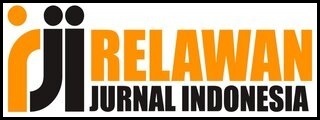The Effect of Exchange Rate, Money Supply, Inflation, and BI-7DRR on Net Asset Value of Sharia Mutual Funds
DOI:
https://doi.org/10.58777/rie.v1i1.73Keywords:
Rupiah Exchange Rate (Exchange Rate), Total Money Supply, Inflation, BI 7DRRAbstract
This research aims to examine the individual and combined impacts of the Rupiah Exchange Rate (Exchange Rate), Money Supply, Inflation, and BI 7DRR on the Net Asset Value (NAV) of Sharia Mutual Funds. The study employs a quantitative approach using secondary data, with a sample size of 60 NAV data points from Islamic Mutual Funds recorded monthly between January 2016 and December 2020. The Error Correction Model (ECM) Engel-Grange is utilized as the analytical method. The findings indicate that, on a partial basis, the Exchange Rate and BI 7DRR variables do not have a significant influence on the NAV of Sharia Mutual Funds. However, the Money Supply and Inflation variables demonstrate a positive and significant impact on the NAV of these funds. Moreover, when considered together, the Exchange Rate, Money Supply, Inflation, and BI 7DRR variables jointly exhibit a significant effect on the NAV of Sharia Mutual Funds. As a result, it is suggested that the government should create a secure and profitable environment for Sharia mutual funds to foster continuous growth. An evident sign of the expansion of Islamic mutual funds is the increasing number of units offered to investors in the community.
References
Adnyana, I. M. (2020). Manajemen Investasi dan Portofolio. Jakarta: Lembaga Penerbitan Universitas Nasional (LPU-UNAS).
Al-Abbasy, A. (2013). Micro & Macroeconomic Determinants of Nav of Islamic Equity Unit Trust Funds in Malaysia: Qualitative Approach. International Journal Economics and Business, 2(1), 19–37. https://doi.org/10.18326/muqtasid.v13i2.160-177
Anwar, A. I., & Nirmala, S. F. (2022). Analysis of the Effect of Non-cash Payment Transactions, Inflation, and Interest Rate on the Money Supply in Indonesia During the Covid-19 Pandemic. Proceedings of the 7th International Conference on Accounting, Management, and Economics (ICAME-7 2022). https://doi.org/10.2991/978-94-6463-146-3_70
Bilgies, A., Fauzan, R., Santosa, P. W., & Wahyuni, S. (2023). Manajemen Keuangan Islam. In D. P. Sari (Ed.), Repository.ibs.ac.id (First). Global Eksekutif Teknologi. http://repository.ibs.ac.id/4464/%0Ahttp://repository.ibs.ac.id/4464/1/Bukti Pengajaran MKI.pdf
Bursa Efek Indonesia. (2022). Pasar Modal Syariah. Bursa Efek Indonesia. Accessed November 20, 2022, from idx.co.id: https://www.idx.co.id/idx-syariah/
Faniyah, I. (2017). Investasi Syariah Dalam Pembangunan Ekonomi Indonesia. Yogyakarta: Deepublish.
Hadi, N. (2018). Pasar Modal (2nd ed.). Yogyakarta: Graha Ilmu.
Handayani, T. U., Santosa, P. W., & Setianingrum, A. (2019). Perbandingan Kinerja Reksadana Konvensional dengan Syariah. JEBA (Journal of Economics and Business Aseanomics), 4(2), 77–92. https://doi.org/10.33476/j.e.b.a.v4i2.1242
Herlianto, D. (2013). Manajemen Investasi Plus Jurus Mendeteksi Investasi Bodong. Yogyakarta: Gosyen Publishing.
https://doi.org/10.21043/aktsar.v2i2.5932
Karim, H. A. dan N. (2021). Pengaruh Inflation, Exchange Rate Dan Bi Rate Terhadap Nilai Aktiva Bersih Reksadana Syariah Di Indonesia. 7(1). https://doi.org/10.21274/an.2017.4.1.51-74
Karim. (2017). Ekonomi Makro Islam. Jakarta: PT. Rajagrafindo Persada.
Mutiara, T., Suryana, S., & Utami, S. A. (2018). Influence of Indonesia Exchange Rate, Inflation and Bank Indonesia Sharia Certificates on Net Asset Value of Sharia Mixed Mutual Funds in Indonesia. ICIEBP, 78–82. https://doi.org/10.5220/0007077100780082
Nada, L. (2019). Fund Age, BI Rate, Exchange Rate, Dan Jakarta Islamic Index Pada Net Asset Value Di Islamic Equity Mutual Fund Indonesia. Jurnal Manajemen, 10(1), 01. https://doi.org/10.32832/jm-uika.v10i1.1750
Natsir, M. (2012). Ekonomi Moneter. Semarang: Polines.
Nurrahmawati, H., Bandungu, P. N., Mauluddi, H. A., Akuntansi, J., Bandungu, P. N., Juniwati, E. H., Akuntansi, J., & Bandungu, P. N. (2021). Analisis Pengaruh Variabel Makro Ekonomi terhadap Nilai Aktiva Bersih Reksadana Saham Syariah Analysis influence of macroeconomic to net asset value of Islamic mutual fund equity period. AKTSAR: Jurnal Akuntansi Syariah, 1(2), 332–348. https://doi.org/10.21043/aktsar.v2i2.5932
Ototitas Jasa Keuangan. (2022). Pasar Modal Syariah. Otoritas Jasa Keuangan. Accessed November 22, 2022, from ojk.go.id: https://www.ojk.go.id/id/kanal/pasar-modal/Pages/Syariah.aspx
Prasetyo, D., & Widiyanto. (2019). Pengaruh Inflation, Nilai Tukar Rupiah, Suku Bunga Bank Indonesia, dan Harga Emas Terhadap Nilai Aktiva Bersih Reksadana Syariah. Konferensi Ilmiah Mahasiswa Unissula (Kimu) 2, 133– 153.
Rizal, David, H. S. dan I. N. (2021). Pengaruh Inflation, Bi Raten Nilai Tukar, dan Jumlah Reksadana Terhadap Nilai Aktiva Bersih (NAV) Reksadana Syariah dan Konventional Di Indonesia. Al-Mashrafiyah: Jurnal Ekonomi, Keuangan Dan Perbankan Syariah, 5(2), 15–27. https://doi.org/10.21274/an.2017.4.1.51-74
Santosa, P. W. (2019). Financial performance, exchange rate, and stock return: Evidence from the manufacturing sector. Jurnal Manajemen Teknologi, 18(3), 205–217. https://doi.org/10.12695/jmt.2019.18.3.5
Santosa, P. W., & Huda, N. (2020). Studi efisiensi pasar modal syariah Indonesia: Over-reaksi atau momentum? DeReMa: Jurnal Manajemen, 15(2), 140–152. https://ojs.uph.edu/index.php/DJM/article/view/2317/pdf
Setyani, D., & Gunarsih, T. (2018). The Effect of Exchange Rates, Inflation, Jci, and the Number of Islamic Mutual Funds on the Net Asset Value of Islamic Mutual. Journal of Applied Economics in Developing Countries, 3(1), 41–51. https://doi.org/10.20961/aedc.v3i1.40116
Shofia, Gusti Khairina, N. dan M. A. I. (2018). Analisis Pengaruh Jakarta Islamic Index, Nilai Tukar Rupiah, Dan Inflation Terhadap Kinerja Reksadana Syariah (Periode 2013 -2017). In Jurnal Hukum Ekonomi Syariah, 4(2).
Siyoto, S., & Sodik, A. (2015). Dasar Metodologi Penelitian. Yogyakarta: Literasi Media Publishing.
Sukirno, S. (2013). Makroekonomi. Teori Pengantar (Ke 3). Jakarta: PT. Raja Grafindo Persada.
Syntia Priyandini, W. (2021). Pengaruh Nilai Tukar (Exchange Rate) dan Inflation Terhadap Nilai Aktiva Bersih Reksa Dana Syariah di Indonesia Tahun 2015-2019. JIMEA: Jurnal Ilmiah MEA (Manajemen, Ekonomi, & Akuntansi), 5(1), 852–868. https://doi.org/10.31955/mea.v5i1.493
Wifi, A. B. D. (2020). Manajemen Investasi Dan Pasar Modal. Pamekasan: IAIN Madura.
Widarjono, A. (2017). Ekonometrika Pengantar dan Aplikasinya Disertai Panduan Eviews. Yogyakarta: UPP STIM YKPN.
Wirman. (2020). Pengaruh Nilai Tukar (Exchange Rate), Jumlah Uang Beredar dan Inflation Terhadap Nilai Aktiva Bersih Reksa Dana Syariah di Indonesia Tahun 2015- 2019. ACCOUNTHINK: Journal of Accounting and Finance, 5(2), 239–258. https://doi.org/10.24252/al-mashrafiyah.v5i2.22783
Yuliadi, I. (2019). Teori Ekonomi Makro Islam. Depok: Rajawali Pers.
Zaman, U. A. B. (2017). Pengaruh Inflation, Nilai Tukar Rupiah, Jumlah Uang yang beredar dan Jakarta Islamic Index (JII) terhadap Nilai Aktiva Bersih Reksadana Syariah. Jihbiz: Jurnal Ekonomi, Keuangan Dan Perbankan Syariah, 1(1), 15–33. https://doi.org/10.33379/jihbiz.v1i1.672
Downloads
Published
How to Cite
Issue
Section
Copyright (c) 2023 Ulfatus Sholeha, Penny Rahmah Fadhlillah

This work is licensed under a CC Attribution-ShareAlike 4.0
 Views: 151
|
Views: 151
|
 Downloaded: 108
Downloaded: 108










